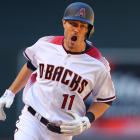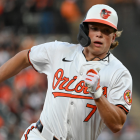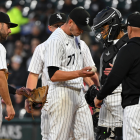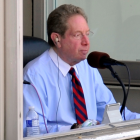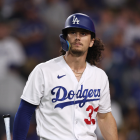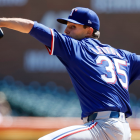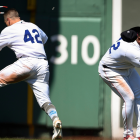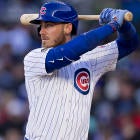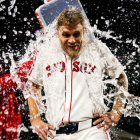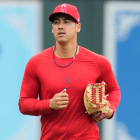The two-time defending NL champion Dodgers have had a busy winter. They made sure to retain Clayton Kershaw, made a trade with the Reds that cleared some salary and shipped some useful players out and now they've signed center fielder A.J. Pollock. They probably aren't done this offseason, as they have the pieces to acquire All-Star catcher J.T. Realmuto.
In glancing at the depth chart and seeing what will be so many moving parts during the 2019 season, it strikes me that the Dodgers' calling card during this run to three straight NLCS appearances and two straight World Series has been depth, both organizational and at the big-league level.
On opening day in 2016, the Dodgers were starting Chase Utley, Adrian Gonzalez, Carl Crawford and A.J. Ellis. In their final game of the playoffs that season -- Game 6 of the NLCS -- Andrew Toles was hitting leadoff while Joc Pederson and Yasmani Grandal were in the starting lineup. Corey Seager was coming off a brilliant rookie season.
Early in 2017, they lost Gonzalez and Toles to injury. Enter Cody Bellinger and Chris Taylor. Early in 2018, they lost Seager while they were still waiting on Justin Turner to return. Enter Max Muncy. The Dodgers later used their organizational depth to acquire Manny Machado's services for the remainder of the season.
Injuries in the rotation led to the emergence of Walker Buehler and to Ross Stripling making the All-Star team.
This is all surface-level stuff, too. We could dig much deeper. We could talk about their manipulation of the 10-day disabled list in order to keep pitchers fresh and limit their workloads as they eye deep October runs, too.
In looking at the organizational depth chart for 2019, the Dodgers are once again well-equipped to deal with injuries, underperformance and have the ability to trade (note the Realmuto mention above). Let's take a look.
We know that manager Dave Roberts loves to deploy different lineups based upon matchups after having watched the last three postseasons. Here's what he could do against righties:
- Joc Pederson, LF
- Corey Seager, SS
- Justin Turner, 3B
- Max Muncy, 2B
- Cody Bellinger, 1B
- A.J. Pollock, CF
- Alex Verdugo, RF
- Austin Barnes, C
Against lefties:
- Chris Taylor, LF
- Seager
- Turner
- Muncy (seriously, Roberts needs to stop platooning him)
- Pollock
- Enrique Hernandez, RF
- Bellinger
- Russell Martin, C
There's still David Freese, too and it's possible Roberts would start him against lefties and leave Bellinger on the bench, but I feel like Muncy and Bellinger need to play every day at least to start the season. Toles is still around, too and, as noted, the Dodgers could add more from the outside. Given how much they've relied on depth, I'd say that's likely.
Now, look at the pitching staff.
The rotation looks like this:
- Clayton Kershaw
- Walker Buehler
- Hyun-jin Ryu
- Rich Hill
- Kenta Maeda
That means there's no spot for Stripling or Julio Urias. Brock Stewart is in the bullpen and could also spot start. Caleb Ferguson is also around and top pitching prospect Yadier Alvarez could be in Triple-A this season.
As far as the bullpen anchored by Joe Kelly and Kenley Jansen, I count 14 names not including Stripling, Urias, Stewart and Ferguson with big-league experience. Just to give an example of the depth, take note of Josh Fields. The veteran right-hander pitched to a 2.20 ERA and 0.95 WHIP last season and he's going to be competing for a roster spot in the spring, quite possibly being sent to the minors to start the season. Or maybe it'll be Dylan Floro (2.25 ERA, 1.25 WHIP) sent down. The point is there are more than eight quality bullpen options.
This is all by design. The 162-game schedule is a grind and can wear players down. The Dodgers are planning on playing all the way though the playoffs, too, which could max out at 19 playoff games. Teams these days need much more than 25 players in order to accomplish the ultimate goal, so Andrew Friedman and company go well over this mark with MLB-quality players.
All told, we're looking a team with 12 viable position-player starters likely to add more, at least seven viable rotation candidates -- a number that could swell to nine or even 10 -- and upward of 18 viable bullpen candidates.
There's no team in baseball that fully competes with the Dodgers on this front. They might not be the best team, but they are the deepest by a mile. The Pollock signing only reinforces that point and it'll further be reinforced when they trade for Realmuto and bump Barnes down to the minors to start the season.













